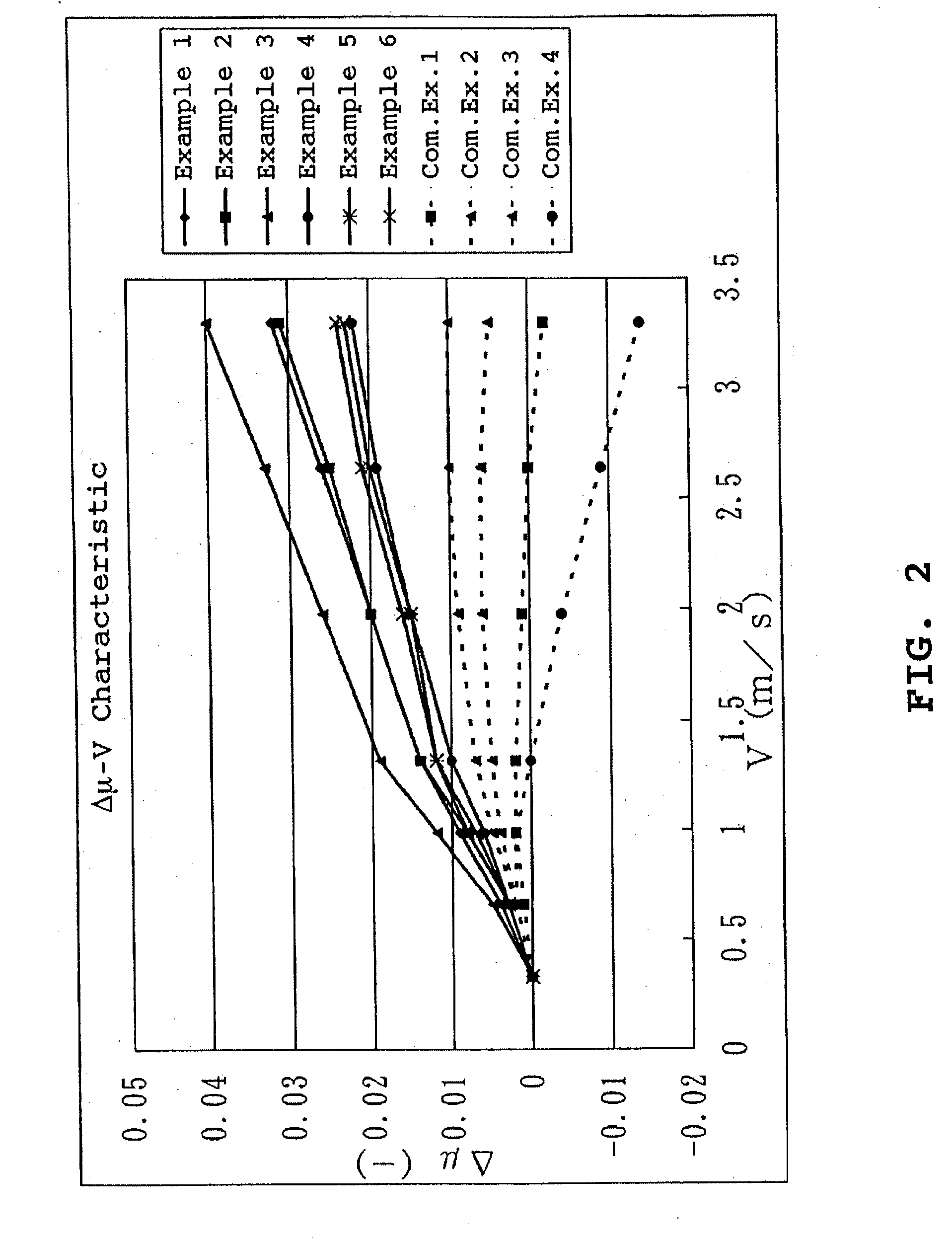Resin composition for use in manufacturing wet friction materials and wet friction material
- Summary
- Abstract
- Description
- Claims
- Application Information
AI Technical Summary
Benefits of technology
Problems solved by technology
Method used
Image
Examples
example 1
[0065] Preparation of Phenolic Resin
[0066] 940 parts by weight of phenol, 895 parts by weight of 37% formalin (F / P=1.1), 20 parts by weight of ammonia water, and 10 parts by weight of 50% sodium hydroxide were put in a flask equipped with a stirrer, a reflux condenser, and a thermometer to be reacted at a temperature of 80.degree. C. for 1 hour. Thereafter, the resultant substance was subjected to dehydration in a vacuum of 110 mmHg, and then at the time when a temperature was reached to 75.degree. C., 370 parts by weight of methanol was added thereto. Then, the thus obtained substance was cooled, to thereby obtain a liquid phenolic resin containing a nonvolatile component of about 64.0 wt %, and having a weight average molecular weight of 358.
[0067] Preparation of Resin Composition for Wet Friction Materials
[0068] The liquid phenolic resin obtained in in the above was mixed with methanol and Fumed silica as a particulate filler (manufactured by TOKUYAMA Corp., with a product nam...
example 2
[0071] A wet friction material of Example 2 was manufactured in the same manner as Example 1 except that a different particulate filler was used, and a different dispersing apparatus was used.
[0072] In this Example, AEROSIL 130 (which is a name of a product manufactured by Nippon Aerosil Co., and has an average particle size of a primary particle of about 16 nm, a specific surface area of about 130 m.sup.2 / g, and a silanol group density of about 2 SiOH / nm.sup.2) was used as a particulate filler, and an ultrasonic generator was used as a dispersing apparatus. It is to be noted that the median diameter of the particulate filler in the obtained resin composition for wet friction materials was 10 .mu.m.
example 3
[0073] A wet friction material of Example 3 was manufactured in the same manner as Example 1 except that a different particulate filler was used, and a different dispersing apparatus was used.
[0074] In this Example, Fumed silica (manufactured by Nippon Aerosil Co., with a product name of AEROSIL 200, and having an average particle size of a primary particle of about 12 nm, a specific surface area of about 200 m.sup.2 / g, and a silanol group density of about 3 SiOH / nm.sup.2) was used as a particulate filler, and CLEARMIX (which is a trademark of a product manufactured by ORGANO CORPORATION) was used as a dispersing apparatus. It is to be noted that the median diameter of the particulate filler in the obtained resin composition for wet friction materials was 9 .mu.m.
PUM
| Property | Measurement | Unit |
|---|---|---|
| Length | aaaaa | aaaaa |
| Fraction | aaaaa | aaaaa |
| Particle size | aaaaa | aaaaa |
Abstract
Description
Claims
Application Information
 Login to View More
Login to View More - R&D
- Intellectual Property
- Life Sciences
- Materials
- Tech Scout
- Unparalleled Data Quality
- Higher Quality Content
- 60% Fewer Hallucinations
Browse by: Latest US Patents, China's latest patents, Technical Efficacy Thesaurus, Application Domain, Technology Topic, Popular Technical Reports.
© 2025 PatSnap. All rights reserved.Legal|Privacy policy|Modern Slavery Act Transparency Statement|Sitemap|About US| Contact US: help@patsnap.com


